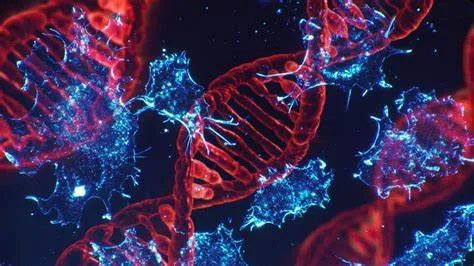Introduction: Imagine life without inheritance where everything can look like anything. It would be so boring to have siblings resembling the neighbor and or resembling nothing, yet even traces of our lineages of succession would hardly be determined. But thanks to nature, from the past until now, we can produce kids looking like the way our parents and grandfathers used to look like. The matter is that we are not trying to be careful, but instead there is a road made for us: The genetic predisposition, and the passing of genes from the cellular DNA. Whether a woman or a man, strong or weak, lazy or powerful, there is a trail through which information is being passed in order to keep history. In our discussion here, we are going to have a closer look at the genetic material also known as DNA and it's structural makeup.
STRUCTURE OF DNA: Deoxyribonucleic acid (DNA) is composed of four deoxyribonucleotides, that is to say, deoxyadenylate (A), deoxyguanylate (G), deoxycytidylate (C), and thymidylate (T). These units are combined through 3' to 5' phosphodiester bonds to polymerise into a long chain. The nucleotide is formed by a combination of base + sugar + phosphoric acid. The 3'-hydroxyl of one sugar is combined to the 5'-hydroxyl of another sugar through a phosphate group. In this particular example, the thymidine is attached to cytidine and then cytidine to adenosine through phospho-diester linkages. In the DNA, the base sequence is of paramount importance. The genetic information is coded in the specific sequence of bases; if the base is altered, the information is also altered. The deoxyribose and phosphodiester linkages are the same in all the repeating nucleotides. [RNA STRUCTURE AND FUNCTION]
Polarity of
DNA molecule: In the case of DNA, the
base sequence is always written from the 5' end to the 3' end. This is called the polarity of the DNA chain.
Watson-Crick
Model of DNA Structure: The salient features of Watson
- Crick Model of DNA are given below:
Right handed
double helix: DNA consists of two
polydeoxyribonucleotide chains twisted around one another in a right handed
double helix similar to a spiral stair case.
The sugar and phosphate groups comprise the handrail and the bases
jutting inside represent the steps of the staircase. The bases are located perpendicular to the
helix axis, whereas the sugars are nearly at right angles to the axis.
The base pairing rule: Always the two strands are complementary to each other. So, the adenine of one strand will pair with thymine of the opposite strand, while guanine will pair with cytosine. The base pairing (A with T; G with C) is called Chargaff's rule, which states that the number of purines is equal to the number of pyrimidines.
Hydrogen bonding: The DNA strands are held together mainly by hydrogen bonds between the purine and pyrimidine bases. There are two hydrogen bonds between A and T while there are three hydrogen bonds between C and G. The GC bond is therefore stronger than the AT bond.
Antiparallel: The two
strands in a DNA molecule run antiparallel, which means that one strand runs in
the 5' to 3' direction, while the other is in the 3' to 5' direction. This is similar to a road divided into two,
each half carrying traffic in the opposite direction.
RELATED;
1. RNA














1 comment:
Thank you so much blog admin for this great opportunity to show my gratitude to Dr Itua herbal center who cure my lyme disease completely within 3 three weeks of usage, I was first nervous about the whole stuff until I finally drank his herbal medicine then get tested and see that he real herbal doctor with great herbs knowledge.
Dr Itua herbal medicine cures all sorts of illness and disease such as hiv,herpes,cancer,hepatitis,diabetes,lyme and other bacteria infections as well.
You can contact dr Itua on email; drituaherbalcenter@gmail.com or visit his website for more information.
Dr Itua did not know that I'm doing this but I think the only way for me to show my gratitude is to heal the world with his herbal knowledge through his goodness.
Thank you once again blog admin.
Post a Comment